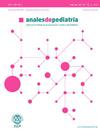儿童和青少年接种流感疫苗。《环境评估共识》、《环境影响评估-环境影响评估》和《环境影响评估》
IF 2.1
4区 医学
Q2 PEDIATRICS
引用次数: 0
摘要
流感是一个重要的公共卫生问题,每年爆发的疫情对卫生保健系统构成重大的社会和经济负担。在每年的流感季节,全世界受影响的儿科人口比例在30%至40%之间,全球18岁以下儿童中有200万至400万严重病例。儿童和青少年也是这种疾病的主要传播者。这里提出的共识文件是由三个科学学会共同制定的:西班牙疫苗学协会(AEV)、西班牙儿科协会(通过其疫苗和免疫咨询委员会CAV-AEP)和西班牙儿科传染病学会(SEIP)。建议对6个月以下的儿童和17岁以下的青少年(两者都包括在内)进行常规流感疫苗接种。还建议对可能将病毒传播给发展为严重疾病的风险增加的群体的任何个人以及6个月以下婴儿的家庭接触者或密切接触者接种疫苗。所有卫生保健专业人员以及孕妇(在怀孕期间的任何时候)接种流感疫苗尤为重要。对于2岁或以上的儿童和青少年,除非有禁忌症,最好接种鼻内减毒疫苗。应努力提高所有推荐人群的流感疫苗接种覆盖率,特别强调高危人群。本文章由计算机程序翻译,如有差异,请以英文原文为准。
Vacunación antigripal en la infancia y la adolescencia. Consenso AEV, CAV-AEP y SEIP
Influenza is an important public health problem that puts healthcare systems to the test each year with outbreaks that constitute a significant social and economic burden. The proportion of the pediatric population affected during the annual influenza season ranges between 30% and 40% worldwide, with 2 to 4 million severe cases in children under 18 years of age globally. Children and adolescents are also the main transmitters of the disease.
The consensus document presented here was developed jointly by three scientific societies: the Spanish Association of Vaccinology (AEV), the Spanish Association of Pediatrics, through its Advisory Committee on Vaccines and Immunizations (CAV-AEP), and the Spanish Society of Pediatric Infectious Diseases (SEIP). Routine influenza vaccination is recommended for children from 6 months of age and for adolescents up to 17 years of age (both included). Vaccination is also recommended for any individual that could transmit the virus to groups at increased risk of developing severe forms of disease and for household or close contacts of infants aged less than 6 months. Vaccination against influenza of all health care professionals as well as pregnant women (at any time during pregnancy) is especially important. For children aged 2 years or older and adolescents, unless contraindicated, vaccination with attenuated intranasal vaccine is preferred. Efforts should be made to improve influenza vaccination coverage in all the recommended groups, with particular emphasis on at-risk groups.
求助全文
通过发布文献求助,成功后即可免费获取论文全文。
去求助
来源期刊

Anales de pediatria
医学-小儿科
CiteScore
2.10
自引率
4.80%
发文量
155
审稿时长
44 days
期刊介绍:
La Asociación Española de Pediatría tiene como uno de sus objetivos principales la difusión de información científica rigurosa y actualizada sobre las distintas áreas de la pediatría. Anales de Pediatría es el Órgano de Expresión Científica de la Asociación y constituye el vehículo a través del cual se comunican los asociados. Publica trabajos originales sobre investigación clínica en pediatría procedentes de España y países latinoamericanos, así como artículos de revisión elaborados por los mejores profesionales de cada especialidad, las comunicaciones del congreso anual y los libros de actas de la Asociación, y guías de actuación elaboradas por las diferentes Sociedades/Secciones Especializadas integradas en la Asociación Española de Pediatría.
 求助内容:
求助内容: 应助结果提醒方式:
应助结果提醒方式:


